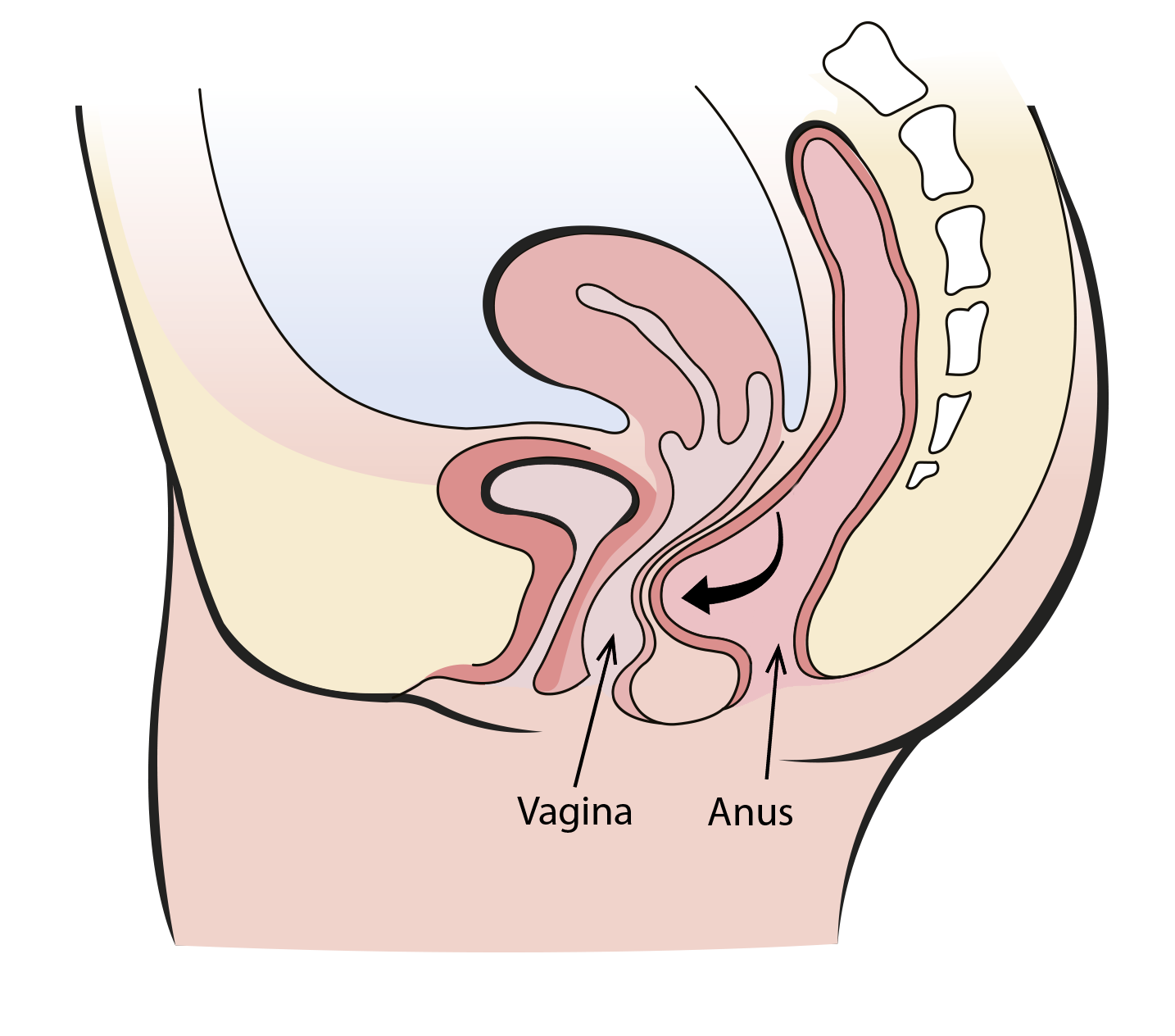What is a rectocele?
A rectocele forms when the wall of connective tissue between the rectum and vagina (called the rectovaginal septum), becomes weak and bulges into the vagina. This bulge can trap stool during a bowel movement and make it difficult to completely empty the bowels. This results in straining to empty during a bowel movement and may also lead to many trips to the bathroom with the frequent urge to go.

What causes a rectocele?
The supporting structures, like muscles, ligaments and tissue can stretch during pregnancy, and vaginal birth. Stretching can make those tissues weaker and less supportive. The connective tissue also thins and weakens with age, making the body more prone to rectocele and other forms of pelvic floor prolapse.
- Multiple vaginal births
- Forceps or operative vaginal deliveries
- Chronic constipation or straining with bowel movements
- Chronic cough
- Repeated heavy lifting
- Obesity
What are the symptoms of rectocele?
- Straining needed to complete a bowel movement.
- Soft, bulging feeling in the vagina.
- Not feeling completely empty after a bowel movement.
- Frequent trips to the bathroom with urge for a bowel movement.
- Feeling of pelvic heaviness.
How common are rectoceles?
Rectocele affects millions of women, many of which don't realize it may be the cause of other ailments such as trouble emptying and frequent trips to the bathroom. Many women may not even be aware of low grade rectocele since there is no prolapse outside the vagina. It's important to see a specialist if you encounter these side effects in order to treat the condition before it worsens.
How are rectoceles treated?
Non-Surgical Treatment
The majority of symptoms associated with rectocele can be managed without surgery. Maintaining a proper diet with high fiber intake will create bulkier stools that will empty easier. Pelvic floor physical therapy can also help patients develop breathing exercises and stretches to better manage the muscles involved during bowel movements.
Releve is a type of vaginal support device that temporarily realigns the rectovaginal wall by providing support to the weakened tissue of the pelvic floor. Similar to a pessary, however Releve is only used during a bowel movement and doesn't require long-term wear.
Surgical Treatment
Surgical repair of rectocele is reserved for severe cases involving high degree of prolapse. During surgery a piece of mesh is permanently sutured to the weakened rectovaginal wall to provide additional support to the herniated tissue and the reform the anatomical defect.
